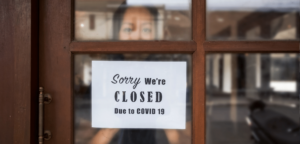In 2024, the market for small business lending is undergoing significant transformation, shaped by evolving trends and the broader economic environment. This article aims to delve into the latest statistics and trends, offering insights into their implications for small business loan approvals and overall success. By exploring these key data points, we hope to equip you and your business with the knowledge needed to navigate the complexities of securing loan funding effectively. Additionally, partnering with esteemed professionals like the Working Capital Marketplace can provide you with expert guidance and the latest updates on current programs and market dynamics, ensuring you’re well-prepared to achieve your financial objectives.
Key factors like a solid credit history and a detailed business plan play crucial roles in the success of loan applications. Furthermore, updated policies from the Federal Reserve Banks have a significant impact on both the approval of loans and the subsequent outcomes for businesses. With statistics from 2023 revealing that 33.3 million small businesses are the driving force behind the US economy, the critical nature of accessible small business loans is undeniable. This underscores the essential role these loans play in supporting the backbone of our economy.
Despite the hurdles introduced by the COVID-19 pandemic, small businesses find themselves at a crossroads of growth and adaptability. Insights drawn from Federal Reserve data and surveys shed light on this ever-evolving landscape. The Federal Reserve’s policies and actions significantly influence the narrative surrounding small business lending in the United States, guiding the trajectory of these vital enterprises.
Current State Of Small Business Loans & Lenders
Small businesses play a pivotal role across various industries and communities, yet they continue to face formidable financial hurdles. According to the latest report from the Federal Reserve, 59% of small business owners have fair or poor financial conditions, highlighting a growing concern within this sector.
The challenges have intensified recently, with 85% of small businesses grappling with short-term financial obstacles in 2021 alone. Furthermore, a mere 42% of these businesses have successfully had their financing needs met through business loans. This reliance on traditional banking solutions is often due to a lack of awareness about alternative financing options available to them.
Despite the availability of loan funds, the pursuit of traditional financing has seen a downturn, with only 34% of small businesses applying for loans in 2021. This shift has led to an increased interest in alternative financing methods as firms seeking traditional financing becomes increasingly challenging. Nonetheless, the percentage of small businesses with outstanding debt dropped to 74% in 2021, indicating more complexity in the landscape of financial management.
Factors Influencing Small Business Lending

Technological Advancement (29.4%)
In 2024, technology continues to transform the financial landscape for small businesses in the United States. The rise of fintech platforms, crowdfunding, and peer-to-peer lending is broadening the horizons for entrepreneurs seeking funding beyond conventional financial institutions. These innovative channels offer easier access and more streamlined processes for securing funds.
However, small business lending statistics reveal a declining trend in the pursuit of loans. From a high of 43% in 2019, the proportion of small businesses applying for loans saw a dip to 37% in 2020, and it further decreased to 34% in 2021. This notable shift in small business financial statistics underscores a growing preference among small business owners to explore and embrace alternative financing options, steering clear of traditional banking methods.
Insufficient Capital (24.2%)
In 2024, financing challenges that results in insufficient capital remains a big concern. Despite economic growth, 29% of small businesses struggle to secure financial assistance due to a limited capital reserve pool. The aftermath of the COVID-19 economic downturn has seen the implementation of stricter lending criteria, further complicating loan acquisition for these entities.
A notable 26.8% of small businesses spend business loan funds on commercial real estate purchases/remodeling. Addressing insufficient capital through innovative financial solutions is crucial for sustaining small business viability and growth.
Payroll Difficulties (21.8%)
According to the small business administration, managing payroll expenses stands out as a critical challenge. Small businesses depend extensively on financing to meet their workforce-related expenses, placing payroll management at the heart of their financial planning. Remarkably, nearly 25% of loan disbursements are allocated towards payroll expenses, highlighting its crucial influence on a business’s financial decisions and long-term viability.
In the face of economic fluctuations, lenders scrutinize a company’s payroll commitments with a keen eye to mitigate risks and support businesses in maintaining their workforce and fostering growth. The lending sector plays a fundamental role in enabling entrepreneurs to uphold their employment levels, thereby contributing to broader economic stability and expansion.
Refinancing (18.6%)
The decision to refinance can significantly affect a firms financial stability and growth potential. Motivated by advantageous interest rates, evolving market dynamics, and the necessity for capital reorganization, refinancing emerges as a strategic move for many entrepreneurs. Moreover, adjustments in regulatory policies and the availability of government incentives related to loan approvals play influential roles in shaping refinancing decisions.
For entrepreneurs navigating the complexities of financing, comprehending these factors is crucial. It enables them to effectively utilize refinancing as a tool not just for immediate financial relief but as a strategic maneuver to bolster their business’s resilience and growth trajectory, by tapping into alternative financing avenues that best align with their long-term objectives.
Businesses Affected By COVID-19
The COVID-19 pandemic has left an indelible mark on small businesses, significantly altering loan statistics and operational landscapes across diverse sectors. The enforced shutdowns propelled numerous businesses into a state of financial distress, with many struggling to return to their pre-pandemic revenue levels or being forced to adapt their business models to manage cash flow more effectively. Loan data reveals a stark picture, revealing that an alarming 82% of small business loan applicants fail due to cash flow problems.

42% of businesses pinpointed a lack of market demand as the root cause of their failure, while 29% depleted their cash reserves entirely. The challenges didn’t stop there; 23% of businesses that seek financing faced internal team dynamics issues, and 19% face intense competition in their markets. These statistics underscore the multifaceted hurdles that entrepreneurs confront and many businesses lack adequate financial reserves to weather emergencies, such as pandemic-related shutdowns.
A survey by Goldman Sachs revealed that 44% of small business owners had less than three months’ worth of cash reserves. This highlights the urgency for strategic planning and risk mitigation measures. By prioritizing comprehensive business plans and thorough market assessments, entrepreneurs can better navigate uncertainties and safeguard their ventures against unforeseen challenges, ultimately increasing their chances of long-term success.
Why Take a Small Business Loan?
Outstanding Debt
Embracing a small business loan can serve as a strategic move for entrepreneurs, particularly in light of the shifting dynamics around business debt. A 2021 survey by the Federal Reserve revealed a notable trend: the proportion of businesses operating without any outstanding debt has been diminishing over the years. By 2021, merely around 25% of businesses remained debt-free, signaling a broader acceptance and strategic use of debt in business operations.
Interestingly, the landscape of small business lending has been evolving, with a decline in the percentage of businesses holding debts under $25,000. Instead, more substantial debts have become increasingly common, with 40% of businesses reporting over $100,000 in debt. This trend towards larger debts is partly due to the infusion of targeted loan programs, such as the Paycheck Protection Program (PPP) loans, designed to support businesses through challenging times. For small business owners, procuring a loan is not just about managing immediate financial needs; it’s a strategic decision aimed at fostering growth and ensuring sustainability. Amidst the pressure of rising financial obligations, a well-considered loan can provide the necessary leverage to navigate through the economic landscape and secure a competitive edge.
Business Failure
Securing funding emerges as a vital lifeline for businesses, particularly given the daunting statistics surrounding new business failure rates. Recent data reveals that 20.8% of private sector businesses in the U.S. do not survive past their first year, an increase from the previous year that underscores the precarious nature of startup ventures.
The pandemic showed how risky securing larger loan amounts can be, accentuating the volatile nature of business financing. SBA loan approval offers essential financial support, enabling business owners to navigate through initial hurdles. In the face of a competitive business environment, the strategic acquisition of an average small business loan can be a game-changer, significantly enhancing a company’s odds of achieving long-term success. This underscores the importance of targeted financial support in building a resilient foundation for new businesses.
SBA Loan Application Statistics
Recent statistics from the Federal Reserve’s latest report reveal a concerning shift in the landscape of SBA loan distribution and the utilization of traditional financing options among small businesses. Over the past few years, there’s been a noticeable decline in the pursuit of such loans, with loan approval rates falling from 43% in 2019, to 34% in 2021 as businesses increasingly opt for alternative financing solutions. Furthermore, the process of securing an approved loan amount has become more challenging for those who do apply for SBA loans. In 2021, only 31% of applicants received the funds they were approved for, a significant drop from the 51% success rate in 2019. This trend disproportionately impacts small business owners, particularly those with a smaller workforce.
Despite large and small banks continuing to be the primary sources for loan disbursement, there’s been a notable shift towards online lenders. In 2021, 23% of the small business sector turned to picking alternative financing options, up from 20% the previous year. On the other hand, others in the lending industry such as finance companies, credit unions, and community development financial institutions (CDFIs) experienced a decrease in loan applications. This evolving scenario underscores a significant transformation in the financial decisions of small businesses seeking funds, highlighting a broader trend towards diversification in funding sources and a growing reliance on digital financing solutions.
SBA Loan Diversity Statistics
Women-Owned Businesses
According to the 2022 Annual Business Survey by the Census Bureau, women-owned enterprises accounted for 22% of all business owners in 2021. This translates to approximately 1.3 million businesses under female leadership, collectively employing 10.5 million individuals. Such figures are not just statistics; they underscore the vital role women entrepreneurs play in job creation and bolstering economic prosperity.
The survey’s findings serve as a testament to the significant growth and expanding influence of women-owned businesses across the nation. It underscores the critical importance of fostering an inclusive business environment and the imperative need for targeted support mechanisms, such as SBA loan approval, to nurture and accelerate the growth of women-led enterprises in various economic sectors.
Minority-Owned Businesses
Recent statistics from the Census Bureau reveal that 21% of small business owners in the United States are minorities, representing a dynamic and diverse entrepreneurial landscape. These businesses are owned by individuals from various backgrounds, including African Americans, Hispanics, Asians, and Native Americans, each contributing uniquely to the tapestry of the American economy.
Notably, Hispanic-owned businesses have experienced significant growth, registering an 8% increase from 2020 to 2021. This uptick suggests a rising trend of Hispanic individuals either launching new ventures or expanding existing ones during this period. This growing diversity among business owners is a positive indicator for the economy, reflecting a broader range of perspectives, innovations, and services. Encouraging such diversity is essential for creating a vibrant, inclusive economy that benefits from the full spectrum of its citizens’ talents and ideas.
Immigrant-Owned Businesses
According to data from New American Economy, immigrants owned over one-fifth, or 21%, of businesses in the United States in 2019. These businesses played a crucial role in the economy, providing jobs and contributing to communities. In 2017 alone, immigrant-owned businesses employed a staggering 8 million people across the country.
These statistics highlight the significant impact of immigrant entrepreneurs on the nation’s business landscape and employment sector. Their diverse perspectives and innovative ideas not only drive economic growth but also enrich the fabric of American society.
Why does Small Business Fail?
Small businesses often struggle to forecast ahead and are left facing financial difficulties. Most business owners struggle to manage their short term financial challenges without a financial services provider that can knowledgably direct them to the best loan approval that will cover their immediate or long term expenses.
When small business owners apply for loans, they may not get the loan approval amounts they need, and they may lack the financial education required to understand the nuances in the loan offer, making it difficult to make informed decisions. Without proper planning and guidance, small businesses owned as employer businesses may quickly get overwhelmed. Overall, a combination of financial constraints, limited experience, and a lack of total loan funds contribute to the failure of many small businesses.
Takeaways
In conclusion, the small business lending environment in 2024 showcases a vibrant array of trends and evolving statistics, highlighting the critical nature of loan accessibility for small enterprises. This access is not just a lifeline but a catalyst for economic expansion and job creation. The emerging data points towards a significant pivot to online lending platforms and a variety of alternative financing solutions, reflecting a broader acceptance and integration of technological advancements in the financial sector. Additionally, the role of government initiatives in bolstering small businesses remains indispensable, underpinning efforts towards innovation and stability in the ecosystem.
For entrepreneurs, grasping these trends is key to making strategic decisions that align with the shifting contours of the lending landscape. The insights gathered illuminate the paramount importance of adaptability and flexibility in securing financing, vital for ensuring the longevity and prosperity of small businesses in an ever-changing economic climate.

